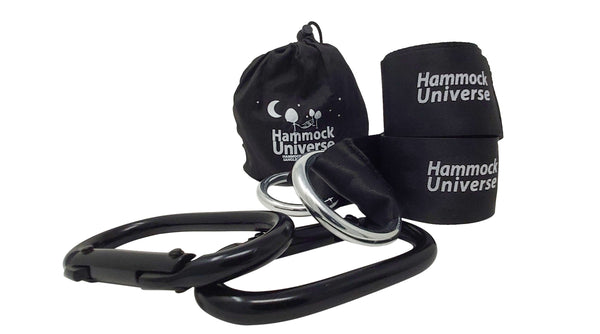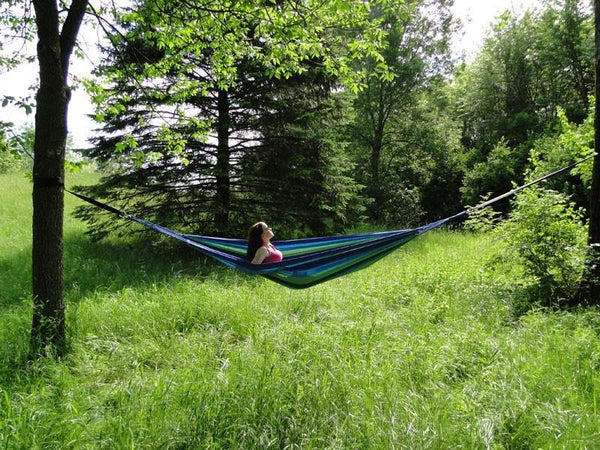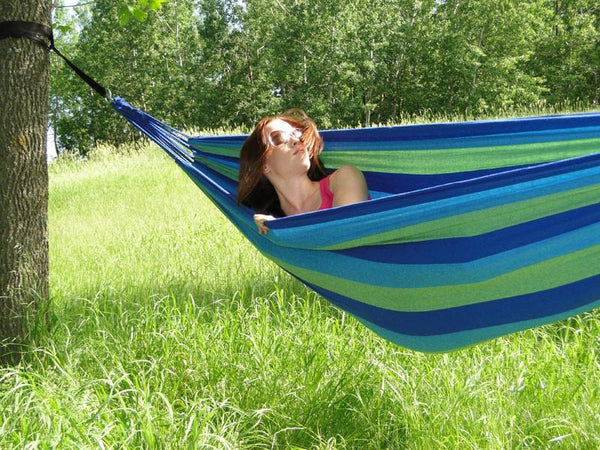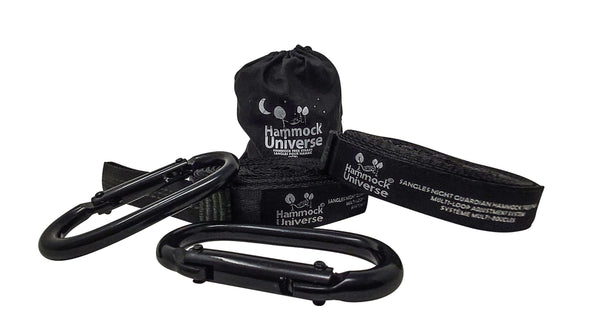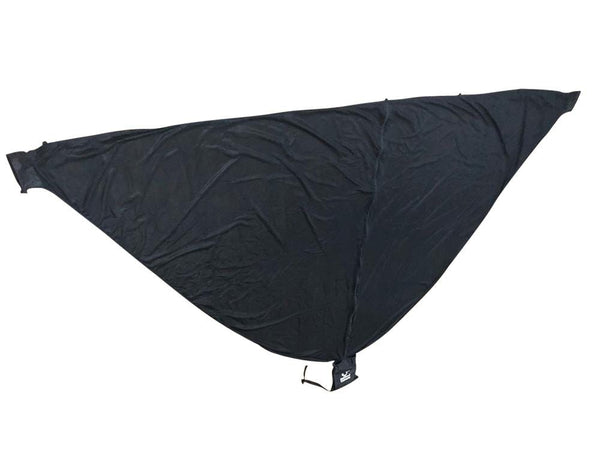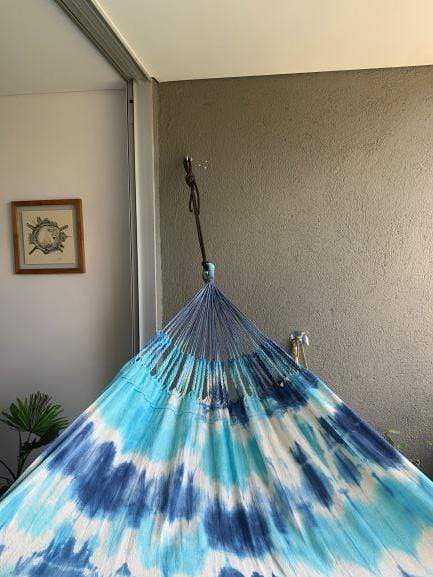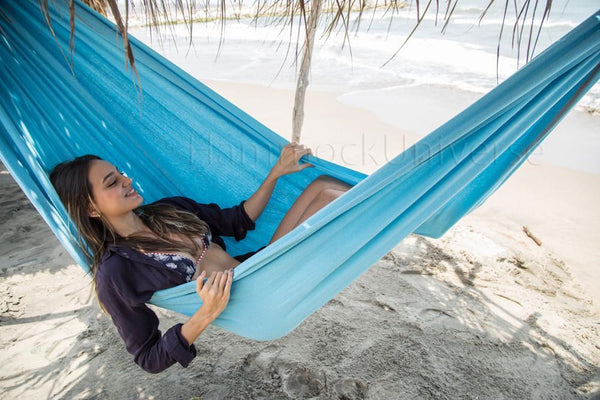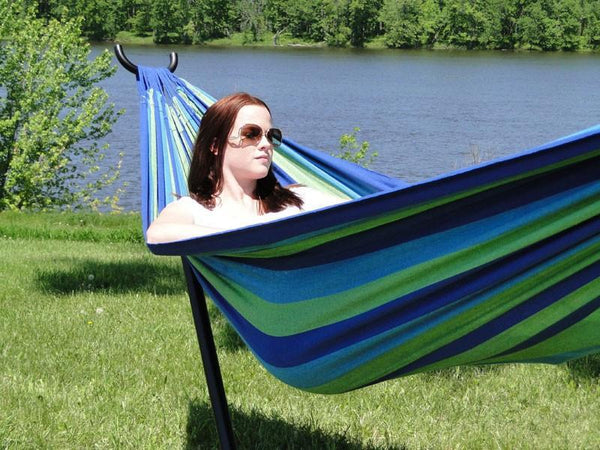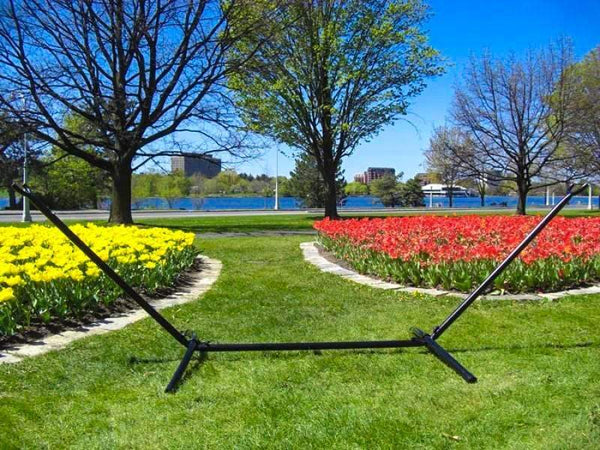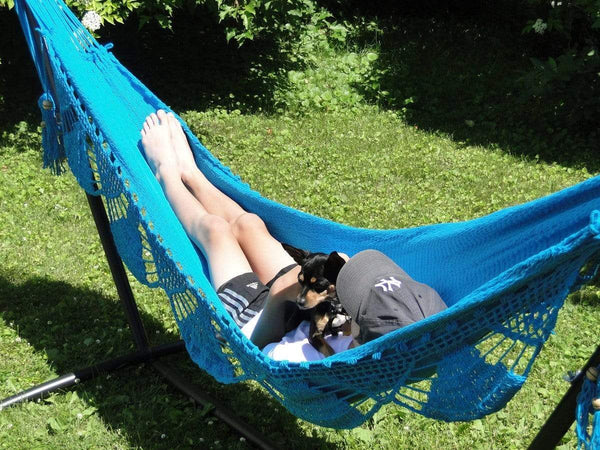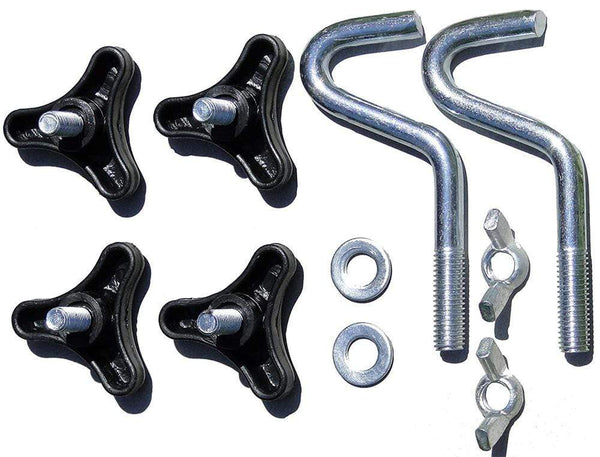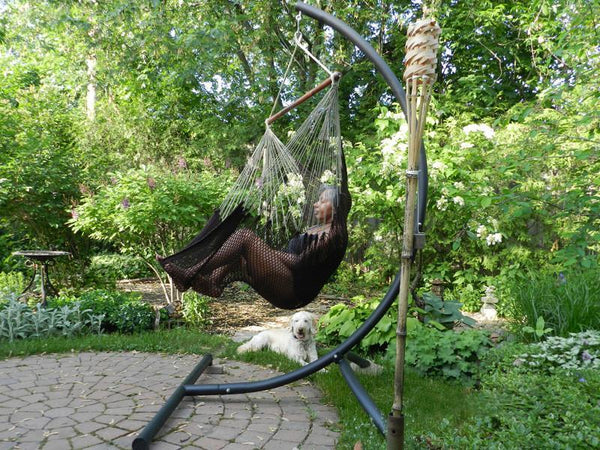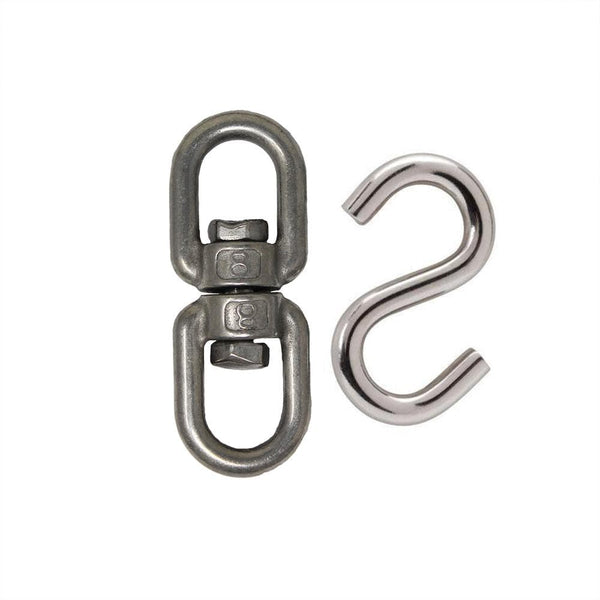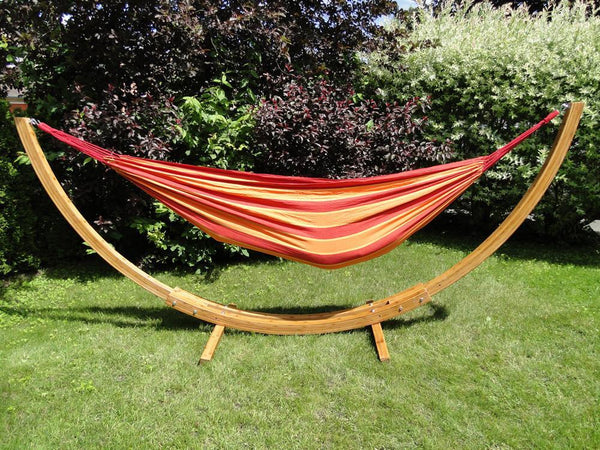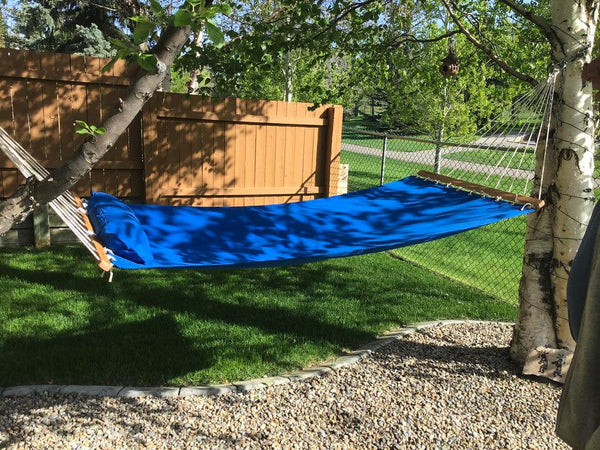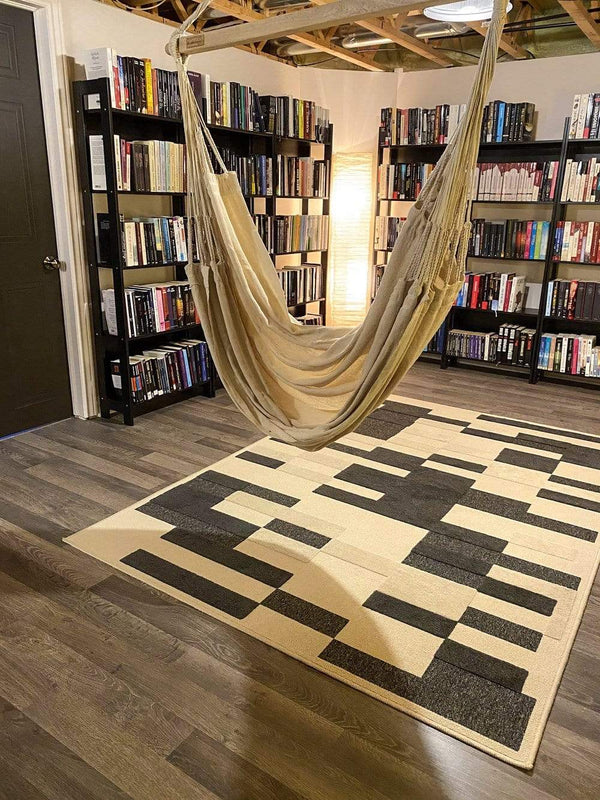FREE SHIPPING on most orders $25+ HAMMOCK BUYING GUIDE
Menu
-
-
Hammocks
-
Hammock Stands
-
Hammocks with Stands
-
Hanging Hammock Chairs
- View all Hammock Chairs
- Brazilian Style Hammock Chairs
- Colombian Hammock Chairs
- Mayan Hammock Chairs
- Mayan Hammock Chairs Deluxe
- Universal Hammock Chair Stand
- U Hammock Chair Stand
- Brazilian Hammock Chair with Universal Chair Stand
- Colombian Hammock Chair with Universal Chair Stand
- Mayan Hammock Chair with Universal Chair Stand
- Mayan Hammock Chair Deluxe with Universal Stand
-
Accessories
- Gift Cards
- Tools and Guides
- Bargain Bin
-
- 1-800-207-4761
- Login

FREE SHIPPING on most orders $25+ HAMMOCK BUYING GUIDE
Hammock Safety Tips for Children and Parents
October 28, 2018 5 min read
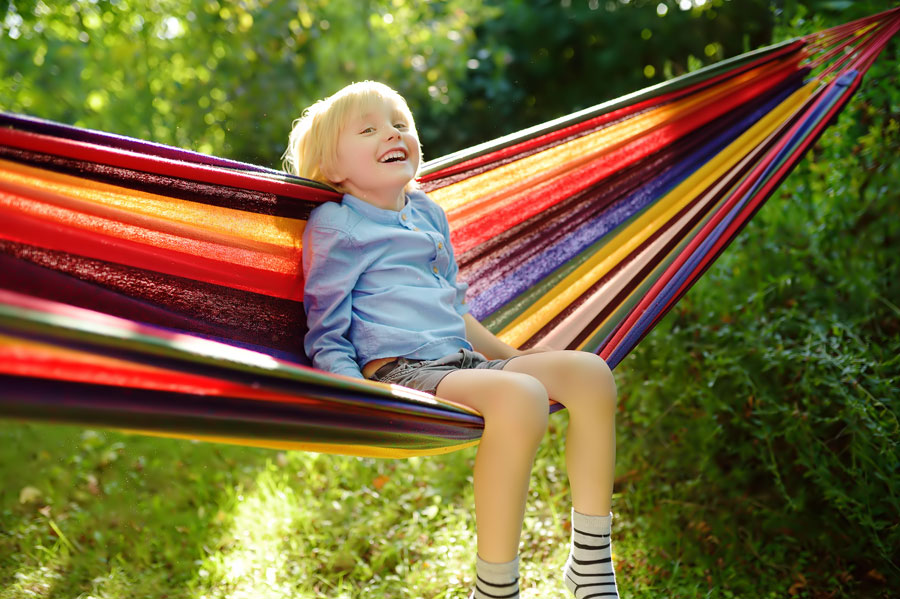
How to Ensure Your Kids Safely Enjoy Hammocks to the Fullest
Hammocks are fun—there are no two ways about it. Kids, especially, love nothing more than climbing into a hammock and out again... and then back in... and out... and so on. But as much as kids might want to enjoy a hammock, they have to do so safely.
Help your kids make the most of their hammock adventures while staying safe! Here’s everything you need to know about hammock safety, including hammock safety rules and tips every child (and parent) should follow.
Common Hammock Risks and Injuries
The most common hammock dangers involve injuries from falling out of hammocks. Hammocks that are too high above the ground pose the greatest risk. There’s a saying in the hammock community: Never hang your hammock higher than you are willing to fall.
Hammocks should be low enough to the ground so that if someone falls out, they won’t get hurt. The hammock also needs to be securely attached to strong anchor points to prevent the hammock itself from dislodging and falling to the ground.
Hammock tautness can also determine safety. Taut hammocks are more likely to flip over while hammocks with more sag are safer to get in and out of. It’s best only to let your kids use hammocks without spreader bars, like nylon or Brazilian hammocks. These hang loosely with a comfortable sag and these are less likely to flip over compared to spreader-bar hammocks.
Kids can also get stuck in a hammock with too much material, netting, and holes. Avoid using rope hammocks and never let your kids use a large hammock without adult supervision.
Safety Tips for Proper Hammock Use
For children, never hang your hammock higher than 2 feet above ground, or above any dangerous terrain or objects, such as slopes, rocks, and bodies of water. To reduce the risk of injury from falls, always hang your hammock low to the flat ground.
Be sure to securely hang your hammock from strong, sound objects that can easily withstand the weight of you and/or your kids in the hammock, especially if your children are playing and bouncing around.
If you're planning to hang a hammock indoors for your kids, read our guide to ensure you do so safely.
If you’re worried about your kids falling out of your hammock, consider securing them to a ridgeline with a harness and rope.
If you’re hanging a hammock in your backyard, a properly-assembled, sturdy hammock stand on a flat surface will hold your hammock well. Otherwise, look for sturdy trees when hanging your hammock outdoors. Do not hang your hammock from dead trees, thin trees, or saplings as they are not strong enough to support pressure from weight.
To find a sturdy tree with a suitable width to hang a hammock, try wrapping your hands around the trunk. Typically, if you cannot wrap your hands around it, then the tree is a good width.
Young and thin trees risk bending under the weight of hammocks while dead trees can easily snap. Dead trees also have branches that could fall with a gust of wind, so when choosing trees, always inspect the branches above as well.
Test these hanging points for strength and stability each time you use your hammock. For a secure and simple hanging method that won’t damage trees, use tree-hugger straps. Make sure they are properly fixed to the trees and the carabiners are securely clipped.
If you’ve never set up your hammock before, carefully read the safety and set up instructions before doing so. And always inspect your hammock and hanging gear for signs of wear, such as:
- Tears,
- Holes,
- Fraying,
- UV fading, and
- Weakness.
Patch holes and tears when you find them and replace damaged or weakened equipment.
Lastly, check the weight limit of your hammock to make sure it can support the weight of you and your kids.
What Ages Are (And Aren't) Appropriate for Your Child to Play in a Hammock
Young infants should not play in hammocks. Older children with developed motor skills can use hammocks if they:
- Know how to get in and out of the hammock safely;
- Know the hammock safety rules; and,
- Don’t use hammocks without adult supervision.
Teaching Kids About Hammock Safety
To help your kids use hammocks safely, teach them these hammock safety rules:
- Don’t use the hammock by yourself—always make sure an adult is close by.
- Don’t jump in and out of a hammock. Get in and out slowly.
- Don’t get in the hammock feet first. Instead, sit in the hammock and slowly shift and even out the weight of your body.
- Don’t stand in the hammock.
- Don’t jump or bounce in the hammock.
Reliable Child-Friendly Hammocks for the Whole Family
Solid, durable hammocks, like nylon hammocks and Brazilian hammocks are ideal for families. They don’t have cords, netting, holes, or loops that could risk your child’s fingers, toes, arms, legs etc. to get stuck in. They are solid and built to withstand even the squirmiest of kids.
These hammocks also don’t require the use of spreader bars. As previously mentioned, spreader-bar hammocks are more taught, and thus, more likely to flip over if not careful. Hammocks with netting can also be tricky for kids and can pose a safety risk if they are playing roughly in this type of hammock.
Netting should only be used if you are hammock camping with your kids and they need a mosquito net to protect them from bugs at night. Otherwise, if you have your hammock set up in your backyard, and your kids won’t be spending the night in the hammock, then it’s best not to use the netting.
Accessories and Products to Keep Kids Safe Around Hammocks
Insulation
Sleeping bags, pads, and under quilts will keep your kids warm while hammock camping.
Mosquito Nets
Zippered mosquito nets will protect your kids from critters and keep their insulating gear from falling out of the hammock overnight. Consider using bright-coloured zipper pulls so your kids can easily see the hammock zippers at night if they need to get out in a hurry.
Shelter
A tarp or rain fly will keep your kids warm and dry if it’s raining. Choose a hammock tarp that's large enough for you to hang your hammocks close together so your kids feel safe and secure next to you.
Lighting
Hang brightly-coloured LED lights around your hammocks so kids can easily see where they’re going at night.
Storage
You can store your hammock with a protective hammock sock. This cover will protect your hammock when not in use. It also ensures it’s securely wrapped up away from children who may be tempted to play in the hammock unsupervised.
Never Leave Your Children Alone When Playing in A Hammock
Arguably the most crucial hammock safety rule is to never leave your children unsupervised around hammocks. And even though you may be in the room or vicinity, that isn’t quite enough.
Parents or guardians should be alert when children are playing in or around hammocks. While it may interfere with your perfect Candy Crush score or dinner plans with the in-laws, it’s well worth the knowledge that they’re playing safely!
If you’re concerned about your kids playing in your hammock when you’re not around, store it away or use a protective sock to wrap it up.
Whether you’re going hammock camping with the kids or having family time in your hammock at home, follow these safety tips to keep your hammock adventures safe and fun for the whole family.
Safety First!
When using a hammock*, safety is paramount. Please make sure to follow these important guidelines when purchasing, installing and using a hammock
*(includes Hammock, Hammock Chair, Hammock Stand and Hammock Accessories)
Safety First!
When using a hammock*, safety is paramount. Please make sure to follow these important guidelines when purchasing, installing and using a hammock
*(includes Hammock, Hammock Chair, Hammock Stand and Hammock Accessories)
Related Products
Want to relax?
Join for exclusive content and promotions we only give to our email list!
